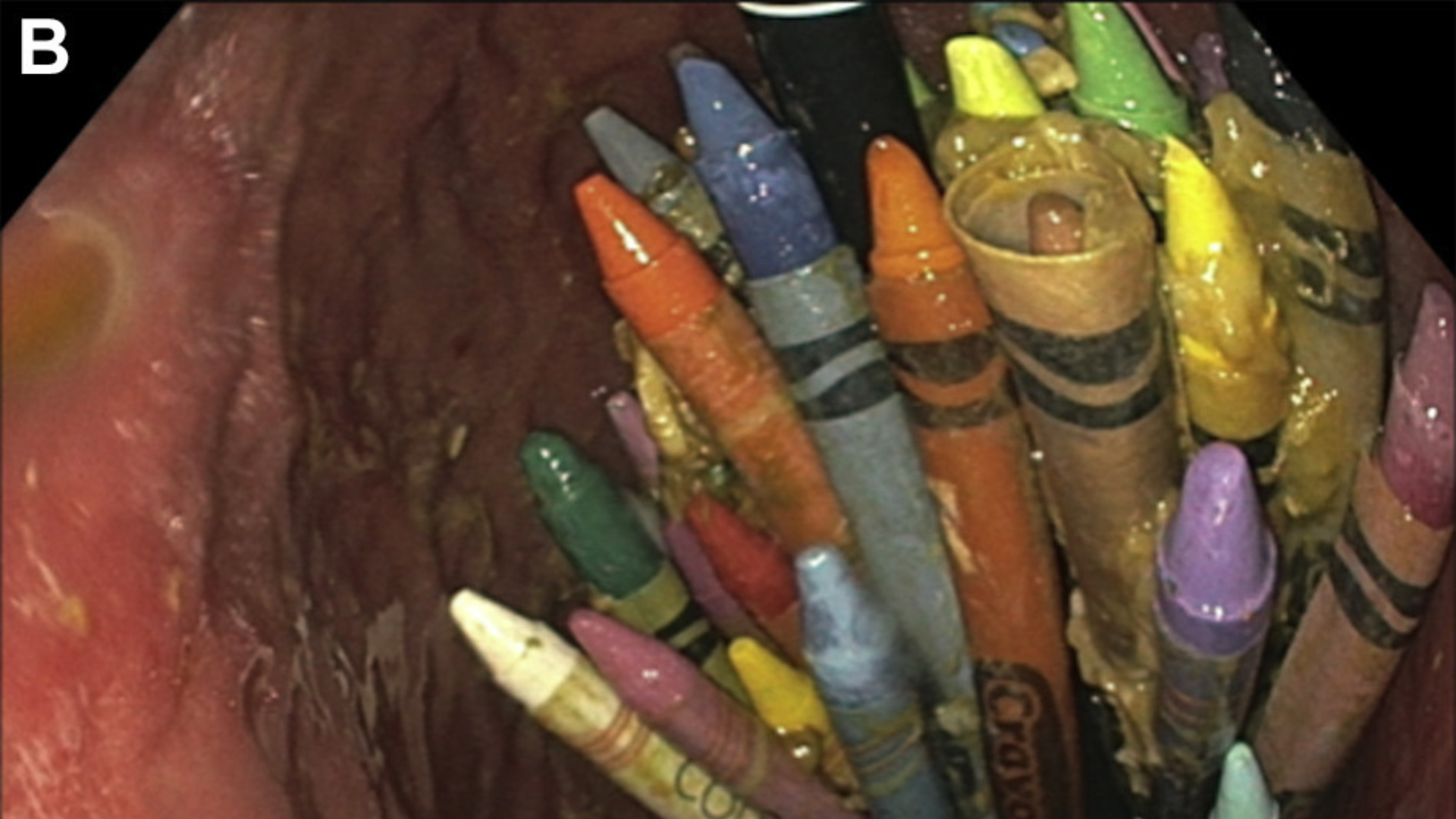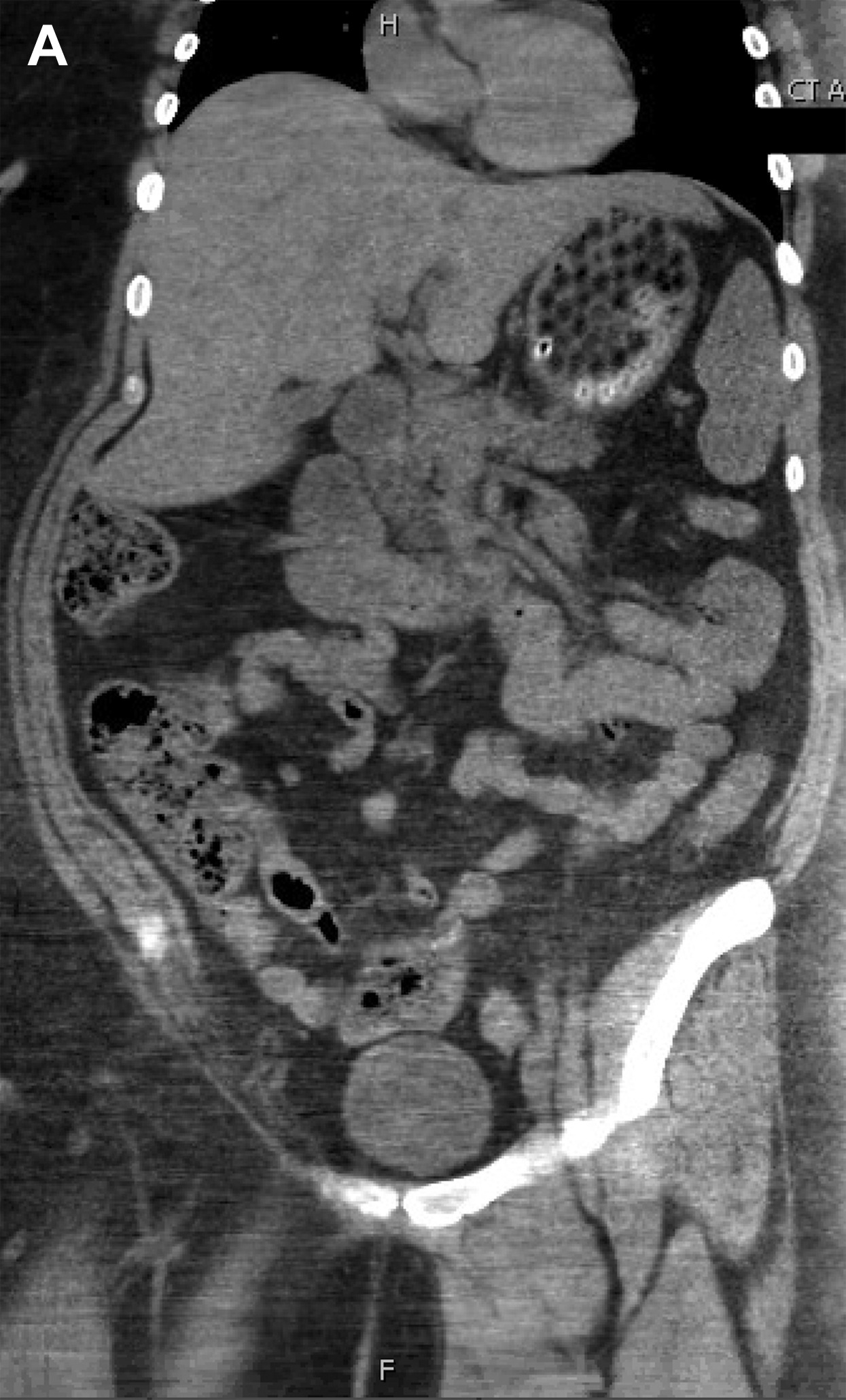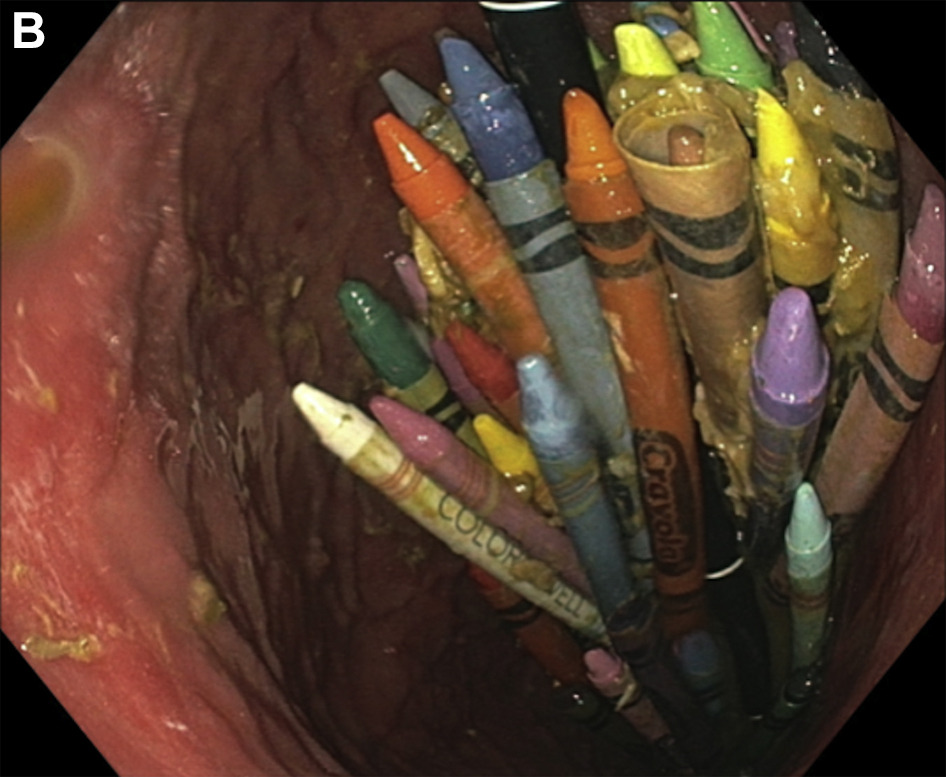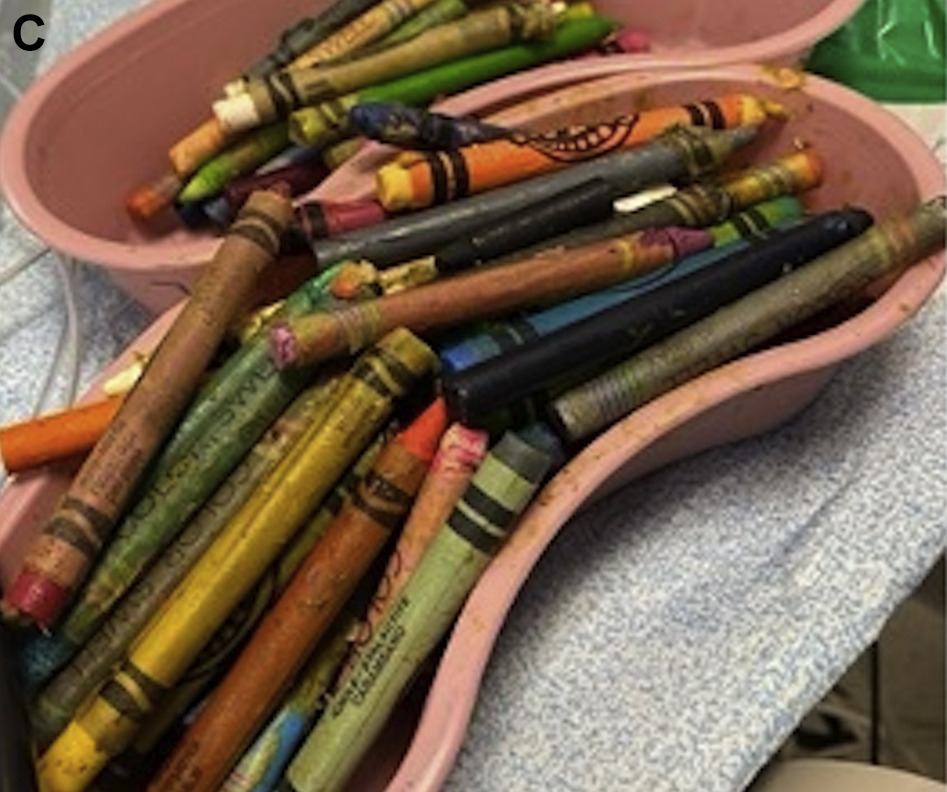Gastro Hep Advances image case: A 27-year-old woman with a history of schizoaffective disorder presented from an inpatient psychiatric facility with an acute onset of nausea, vomiting, abdominal pain and early satiety. On examination, vital signs were stable. Abdomen was distended and diffusely tender to palpation but without peritoneal signs. Computed tomography scan showed multiple, well-circumscribed lesions of varying density within the gastric body but no evidence of perforation or obstruction (Figure A).
Upper endoscopy was performed. The esophagus was normal in appearance. Upon entering the stomach, there were numerous crayons layered in the gastric fundus and gastric body (Figure B). An overtube was placed into the stomach under endoscopic guidance, and a total of 81 full-size and intact crayons, crayon wrappers and a pen were removed with a snare (Figure C). Guidelines on foreign bodies in the stomach recommend urgent removal of sharp or long (>5 cm length) and/or wide (>2.5 cm diameter) objects with surgical consultation if the foreign body is unable to be retrieved endoscopically. The patient did well after the procedure and was discharged back to inpatient psychiatric facility.















